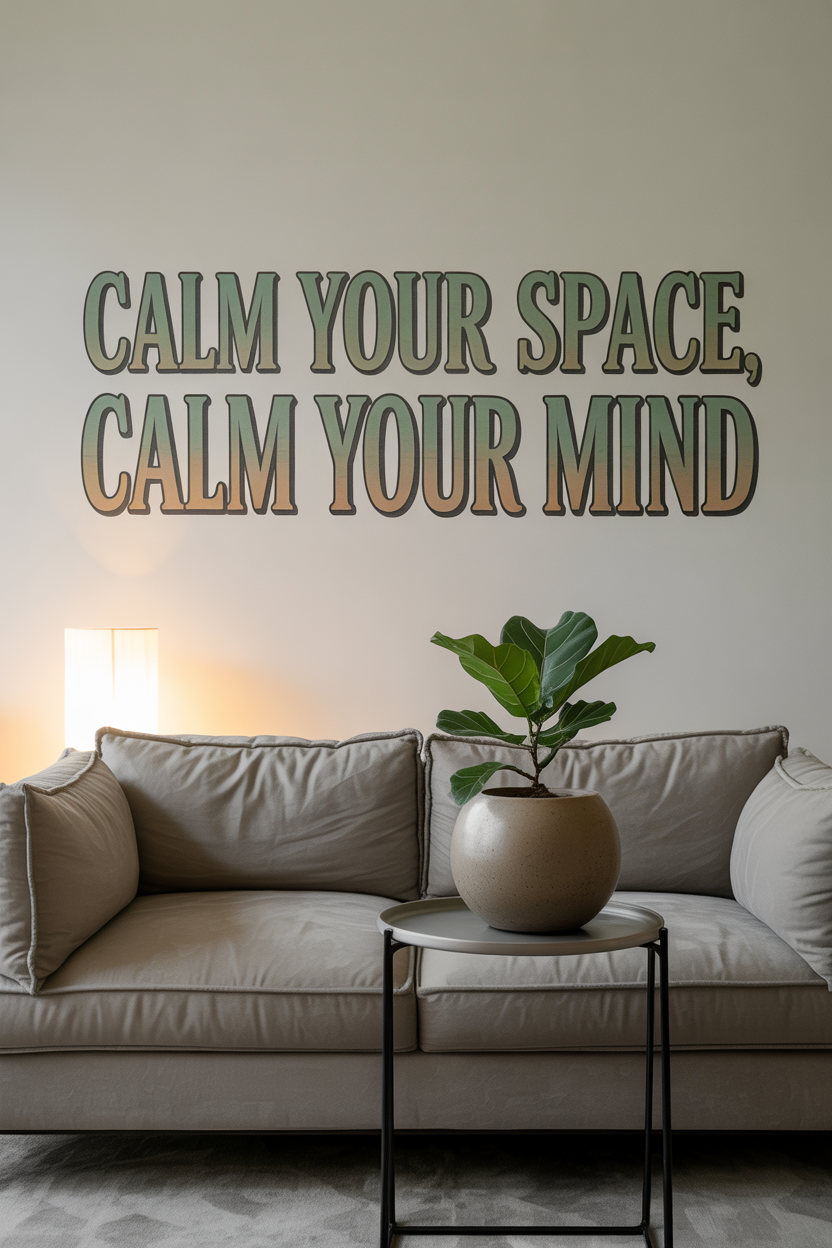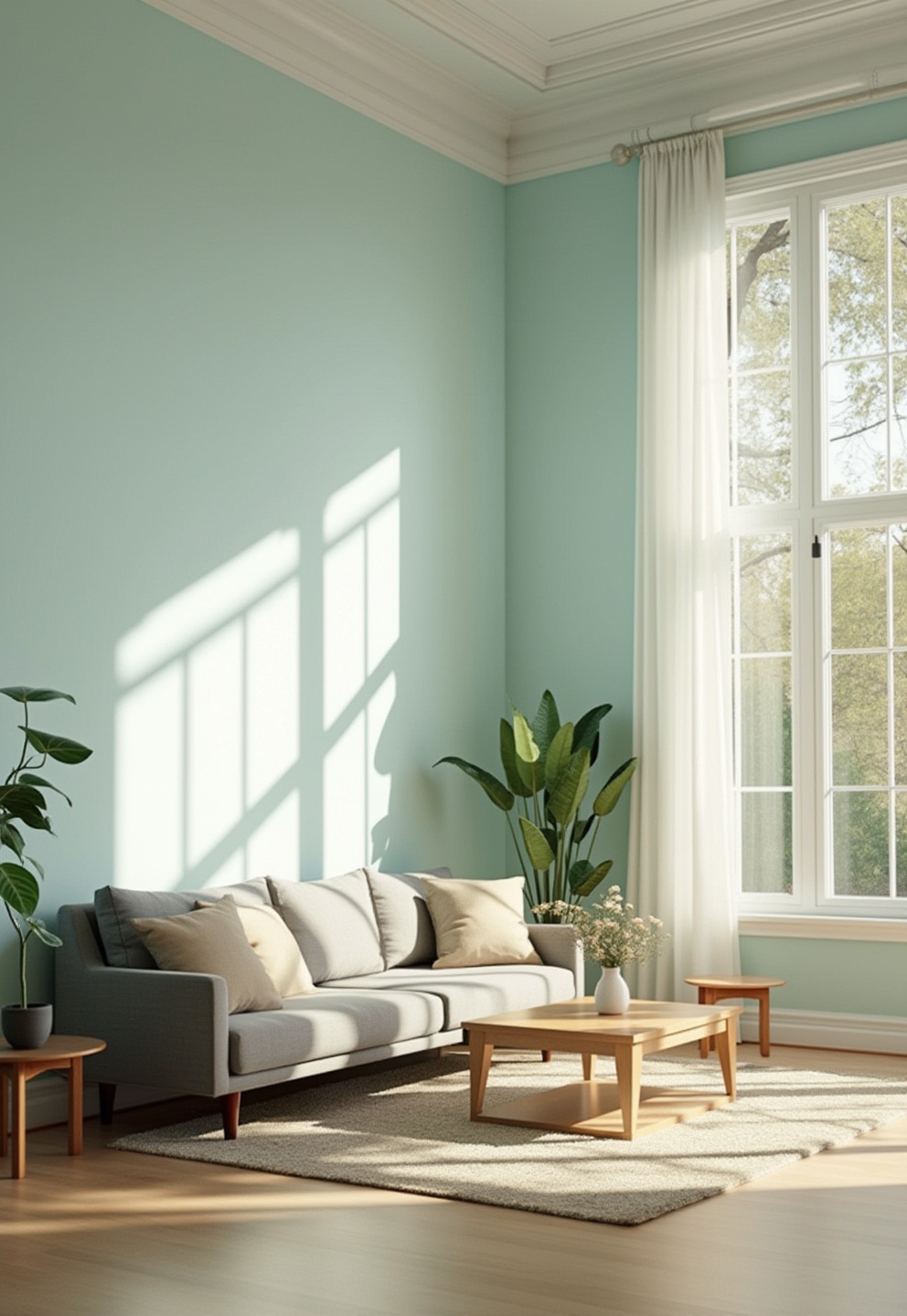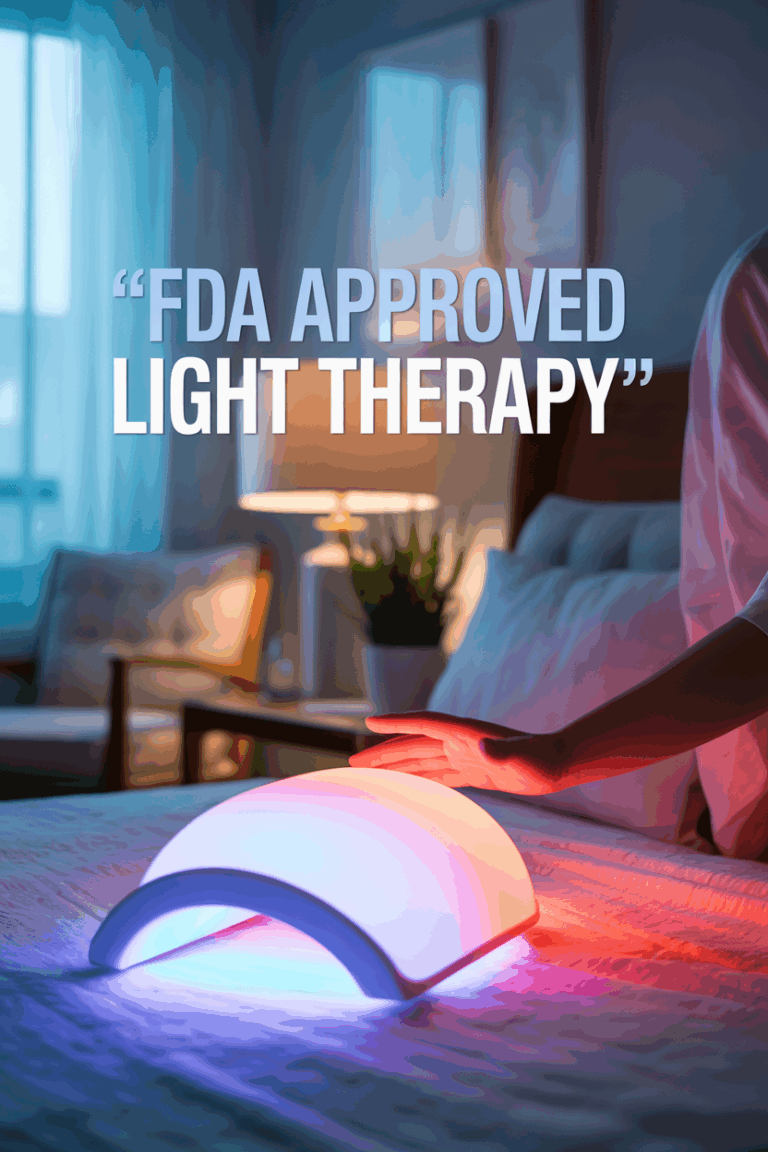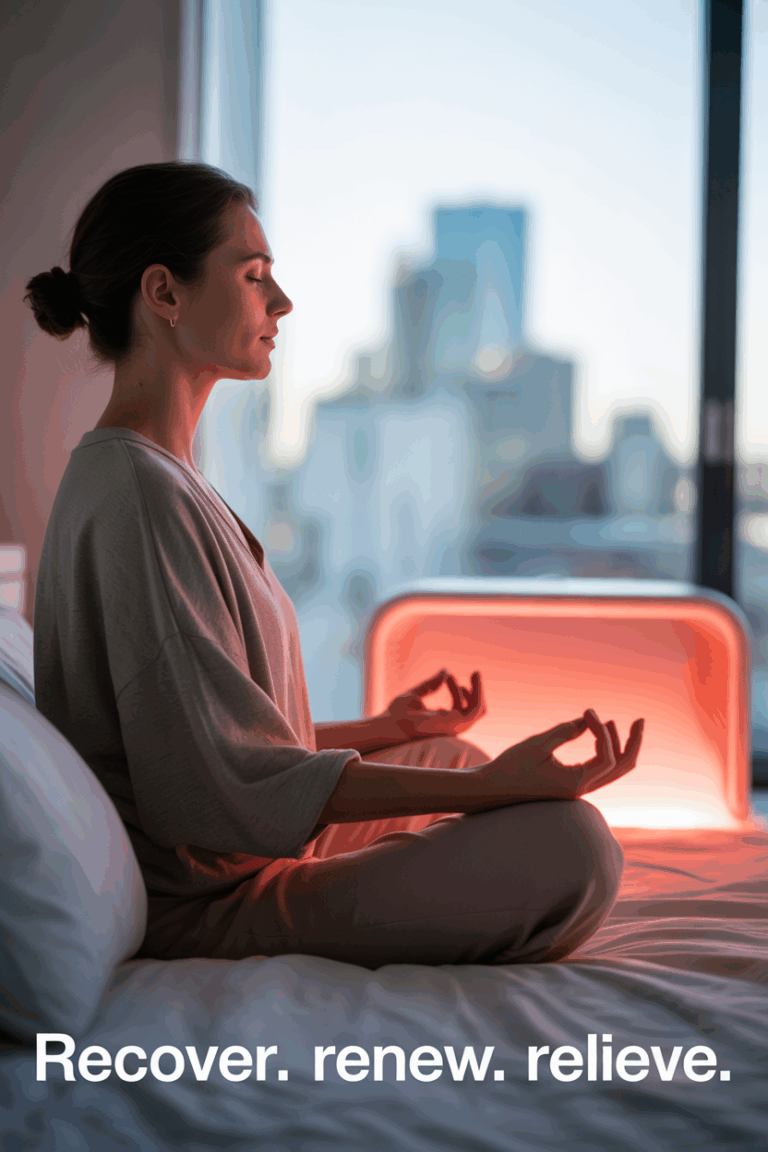7 Calming Colors for Stress-Free Living (Instant Relief)

Embrace Calm with Soothing Blues: Sky & Baby Blue


Light and gentle blues create an immediate sense of calm and clarity. Sky blue, the color of a clear day, can make a room feel more open, airy, and peaceful. It’s a color that feels both expansive and serene.
Many people find these blues relaxing because they remind us of tranquil waters and wide-open skies. Using these colors in your home can make rooms seem larger and brighter, creating a quiet and restful mood.
Studies even suggest that the color blue can help lower blood pressure and heart rate. It’s linked to feelings of tranquility and wellbeing, making it a great choice for lowering stress.
A slightly softer shade, baby blue, brings similar feelings of calm and peace. It’s a gentle color often used in bedrooms and nurseries to create a quiet environment that encourages rest.
In color psychology, blue is connected to trust, stability, and confidence. This is why you’ll often see it in healthcare settings and spas, where creating a calming atmosphere is important.
These gentle blues are perfect for bedrooms and bathrooms. They pair beautifully with crisp white for a clean look or with earthy tones like beige for a natural, balanced style.
Refresh Your Space with Nature’s Greens: Mint & Sage


Soft, muted greens bring the healing feeling of nature right into your home. Shades like mint and sage green have a wonderfully soothing effect, promoting feelings of peace and harmony.
Mint green is a cool, fresh shade that blends green and white. Its strong connection with nature and renewal can help lower stress and anxiety, creating a spa-like feeling in any room.
Sage green is a more muted, earthy shade that mixes gray and green. Named after the leaves of the sage plant, it is linked to wisdom and growth, helping create a feeling of balance.
These greens are incredibly versatile for home decor. They work well in bedrooms, bathrooms, and living rooms, and they pair nicely with natural materials like wood and stone, which adds to their calming quality.
Because these shades of green are not too stimulating, they are also an excellent choice for home offices or study areas. Some studies even suggest that green can help improve focus and productivity.
Whether you choose the refreshing feel of mint or the grounded harmony of sage, these colors connect us to the natural world, which is a big reason they feel so calming.
Find Tranquility with Gentle Purples: Lavender & Mauve


Soft, muted purples like lavender and mauve bring a gentle, calm, and even sophisticated feeling to a space. These hues are often linked to relaxation, stress relief, and quiet thought.
Lavender, a light and floral purple, is well-known for its calming abilities. It is believed to help lower heart rate and blood pressure, with some studies suggesting it can reduce anxiety and improve sleep.
This makes lavender a great choice for bedrooms, meditation areas, or any space where you want to rest and recharge. It pairs beautifully with whites, grays, and other pastels for a soft and inviting look.
Mauve is a more subdued purple with gray undertones, offering a sophisticated sense of serenity. It brings a tranquil feeling without being overly sweet, making it a versatile choice for both modern and traditional decor.
In color psychology, these gentle purples are tied to grace, elegance, and creativity. They can add a touch of quiet luxury to a room without feeling overwhelming.
Many wellness products, from candles to essential oils, use the color and scent of lavender to help people relax. Bringing these hues into your home can create a peaceful sanctuary for your mind.
Wrap Yourself in the Soft Comfort of Gentle Pinks


Soft pinks, like pastel pink, blush, and dusty rose, create a calm and warm feeling. They are associated with warmth and nurturing, and can make a room feel like a comforting hug.
Pastel pink is one of the softest calming colors. Its light, gentle tone can help create a peaceful environment that promotes rest. Some studies, like the “Baker-Miller Pink” experiment, even suggest certain pinks can reduce feelings of aggression.
Blush is a soft, pale pink that can range from peachy to rosy. It pairs beautifully with neutrals like cream and light gray, adding a touch of serene color through pillows, curtains, or art.
Dusty rose is a more muted, mature pink with beige or gray undertones. It has a sophisticated feel that offers a soft, comforting presence and is linked to feelings of nurturing and compassion.
These gentle pinks work well in bedrooms and living spaces to promote a sense of peace. They are sometimes used in spas and wellness centers to help people feel more at ease.
By choosing these muted, soft versions of pink instead of brighter shades, you can use their soothing energy to create a supportive and peaceful space in your home.
Build a Stable Foundation with Soft Gray


Soft gray is a very versatile and calming color. It creates a peaceful and stable feeling in any room. As a true neutral, it has a unique ability to be soothing without demanding attention.
This color can make a room feel spacious and airy, allowing other elements like furniture and art to stand out. It acts as a quiet background that helps calm your mind and reduce distraction.
In bedrooms, soft gray promotes relaxation and can lead to better sleep. It pairs well with nearly any accent color—from soft pastels for a dreamy feel to bolder shades for a touch of drama.
Offices often use soft gray to create a focused and productive environment. Gray is a non-arousing color, which means it’s not distracting and helps people concentrate on their work.
Unlike stark white, which can sometimes feel cold, soft gray provides a sense of warmth and coziness. This is especially true when you balance it with textures like wood or soft fabrics.
When picking a soft gray paint, pay attention to the room’s lighting. Natural light can bring out different undertones, subtly changing the mood of the space throughout the day.
Invite a Welcoming Glow with Peach & Coral


Warm, gentle tones like peach and coral can create a surprisingly calm yet happy atmosphere. These colors blend the softness of pink with the gentle energy of orange, resulting in hues that feel welcoming and nurturing.
Peach is often linked to feelings of comfort, friendliness, and security. It can help reduce anxiety and encourage conversation, making it a wonderful choice for living rooms or dining areas where people gather.
Its soft glow can make a room feel cozy and inviting, especially in natural light. Peach walls can give a space a warm, healthy radiance that feels both fresh and comforting.
Coral sits between pink and orange, bringing a touch of the ocean’s serene beauty indoors. It reminds people of beach vacations and tropical sunsets, which adds to its positive, relaxing feeling.
While more energetic than peach, soft coral can add a pop of vitality to a room without being overwhelming. It works beautifully as an accent color in pillows, rugs, or artwork.
Both peach and coral pair nicely with neutrals like beige and cream for a balanced look. They bring a sense of warmth and positive energy to spaces that need a gentle lift.
Brighten Your Mood with Warm Neutrals: Cream & Pale Yellow


Warm neutrals like cream and pale yellow are a gentle, soothing choice instead of plain white. These colors create a comfortable and tranquil atmosphere filled with subtle warmth and light.
Cream falls between white and beige, bringing a sense of comfort and simple elegance. It can make small spaces feel larger and brighter, creating a welcoming atmosphere without feeling cold or sterile.
In bedrooms, cream provides a calm backdrop that promotes relaxation and restful sleep. Its warmth makes it a popular choice for living rooms, creating a cozy base that pairs well with almost any other color.
Pale yellow brings the gentle warmth of sunshine indoors without being overpowering. This soft, light shade can boost your mood and energy in a subtle way, as it’s often associated with happiness and clarity.
Brighter yellows can sometimes feel jarring, but pale yellow is soothing and uplifting. It’s an excellent choice for kitchens, dining rooms, or any space that could use a touch of cheerful optimism.
Both cream and pale yellow complement natural materials like wood and wicker beautifully. Using these warm neutrals can help you create a space that feels open, airy, and filled with a gentle, positive light.
Find Balance with Light Teal’s Refreshing Hue


Light teal is a uniquely soothing color that strikes a perfect balance between the stability of blue and the harmony of green. This blend creates a calm and refreshing atmosphere in any space.
Many people find light teal to be both relaxing and peaceful. Because it’s a mix, it has the calming qualities of both blue and green, which can promote tranquility and emotional balance.
It’s often used in bedrooms, bathrooms, and living areas to help reduce stress and anxiety. The color feels clean and modern, suiting various design styles from coastal to contemporary.
Light teal works wonderfully with white, beige, and gray for a crisp, serene look. For a nature-inspired palette, it also pairs beautifully with darker blues, greens, and natural wood tones.
In work environments, light teal can help boost focus and productivity. It provides a touch of energizing color that is less intense than brighter shades, keeping the mind clear and engaged.
Whether used on a full wall or as a simple accent, light teal brings a sense of refreshing clarity, making it a great choice for creating a space that feels both calm and fresh.
Why Do Some Colors Feel So Calming?


Colors affect our moods and emotions in powerful ways, often without us even realizing it. The reason some colors feel calming comes from our psychology, our culture, and even our own personal memories.
Why Our Brains Love Certain Hues
Cool colors like blue, green, and soft purple are easier on our eyes. They don’t stimulate our nervous system as much, which can lead to physical relaxation, like a slower heart rate.
Many of these colors are also found in nature. Our brains connect the green of trees and the blue of water with feeling safe and peaceful. This deep-seated connection helps reduce stress and anxiety.
In contrast, bright, warm colors like red are more stimulating. While great for grabbing attention, they can sometimes lead to feelings of agitation. This is why softer, muted tones are better for creating a sense of calm.
How We Form Personal Connections to Color
Beyond why most people feel a certain way, our feelings about color are deeply personal. A particular shade might remind you of a peaceful childhood memory, a favorite vacation, or a cozy blanket, making it uniquely calming for you.
Cultural ideas also play a role. While blue is seen as calming in many Western cultures, other colors hold different meanings around the world. For example, white represents peace in some places but is linked to mourning in others.
Ultimately, the most calming colors for you are the ones that make you feel safe, comfortable, and at ease. Noticing how you feel around different colors is the first step to using them to improve your wellbeing.
How to Weave Calming Colors into Your Daily Life


Creating a peaceful environment doesn’t require a complete home makeover. You can easily weave calming colors into your daily life through small, mindful choices that have a big impact on your mood.
Start with Your Sanctuary
Your bedroom should be a haven for rest. Consider painting the walls a soft blue, sage green, or warm gray. If painting isn’t an option, simply changing your bedding to a calming color can change the feel of the room.
In your living areas, introduce calming colors with soft furnishings. A cozy throw blanket in dusty rose, accent pillows in a gentle cream, or a rug with tones of light teal can instantly make the space more inviting and relaxing.
Incorporate Small, Mindful Touches
You can find calm with color beyond your walls. Choose a favorite mug in a calming shade, like lavender or mint green, for your morning tea or coffee. This small ritual can set a peaceful tone for your day.
Bring calm to your workspace by organizing with folders, notebooks, or pen holders in soft gray or pale yellow to help with focus. You can even set your phone or computer background to a serene image with a soothing hue.
Even your wardrobe can be a source of calm. Wearing a soft, baby blue sweater or a sage green scarf can help you carry a sense of peace with you wherever you go.
How to Build a Relaxing Color Palette

Putting calming colors together in a thoughtful way is the secret to a truly relaxing space. Instead of using just one color, try building a palette that works together to create a serene atmosphere.
A monochromatic scheme is one of the easiest ways to create calm. This means using different shades and tones of a single color. For example, pair a soft sky blue wall with a deeper navy blue accent pillow and a pale blue throw.
An analogous color scheme uses colors that are next to each other on the color wheel, like blue and green. A palette of sage green, light teal, and soft blue creates a beautiful, nature-inspired harmony that is deeply restful.
For a clean and classic look, pair your main calming color with a warm neutral. A soft gray or cream provides a perfect, quiet backdrop for colors like dusty rose, lavender, or sage green.
Here are a few palette ideas to inspire you:
- Spa-Like Retreat: Soft Sage Green + Creamy White + Natural Wood Tones
- Cozy Haven: Dusty Rose + Soft Gray + Accents of Mauve
- Airy Serenity: Sky Blue + Crisp White + Touches of Pale Yellow
The goal is to avoid sharp contrasts that can feel distracting. By sticking to soft, muted tones and natural combinations, you can design a space that feels tied together, balanced, and very peaceful.
Begin Your Journey to a Calmer You

Using the power of calming colors is a wonderful and simple form of self-care. It’s about consciously creating an environment that supports your peace of mind and overall wellbeing.
Start by simply paying attention. Notice how different colors in your home, office, and even in nature make you feel. Your personal response is the most important guide on this journey.
You don’t need to make big changes overnight. Begin with one small step. Treat yourself to a new throw pillow, a flowering plant with soft green leaves, or a single art print with a calming blue sky.
Observe how that small addition changes the energy of your space and your mood. Let it inspire your next small step, and then the next.
By intentionally surrounding yourself with hues that soothe your soul, you are sending a powerful message to yourself: that your peace matters. Your space often reflects how you feel inside, and making it calm is a great way to find more peace within yourself.
13) Dusty Rose

Dusty rose is a soft, muted pink color that brings a sense of calm and warmth to spaces. This gentle hue falls between pink and beige, creating a soothing atmosphere in rooms.
Many people find dusty rose relaxing because it’s not as bold as brighter pinks. It has a subtle, understated quality that doesn’t overwhelm the senses.
This color works well in bedrooms, living rooms, and other areas meant for rest and relaxation. It pairs nicely with neutral tones like gray, cream, and white.
Dusty rose can make a space feel cozy and inviting. It adds a touch of femininity without being too girly or frilly.
Some describe dusty rose as a “mature” pink. It has a sophisticated feel that appeals to adults while still maintaining a soft, comforting presence.
In color psychology, dusty rose is linked to nurturing and compassion. It may help create an environment that feels supportive and caring.
This color can be used on walls, in textiles, or as an accent in decor items. Even small touches of dusty rose can add a calming element to a room’s design.
14) Baby Blue

Baby blue is a soft, pale shade of blue that often brings feelings of calm and peace. This gentle color is linked to clear skies and tranquil waters.
Many people find it soothing and relaxing.
In home decor, baby blue can create a serene atmosphere. It works well in bedrooms, bathrooms, and living spaces.
The color pairs nicely with white, gray, or light wood tones.
Designers use baby blue to make rooms feel more spacious and airy. It can brighten up small areas and add a touch of cheerfulness.
The color is also popular for nurseries and children’s rooms.
Some studies suggest that light blue shades like baby blue may lower blood pressure and heart rate. This could explain why many people feel calmer in spaces with this color.
Baby blue clothing is seen as friendly and approachable. It’s a common choice for business attire when a softer look is desired.
The color can help put others at ease during meetings or presentations.
In marketing, baby blue is used to convey trust and reliability. Many healthcare and tech companies use this shade in their branding.
It helps create a sense of stability and professionalism.
15) Coral

Coral is a soft, warm color that brings a touch of the ocean to any space. It sits between pink and orange on the color wheel, making it a versatile hue for many settings.
This color can create a calming atmosphere in homes and offices. Coral walls or accents can make a room feel cozy and inviting.
The shade reminds people of beach vacations and tropical getaways.
Coral works well in bedrooms, living rooms, and even kitchens. It pairs nicely with neutral tones like white, beige, and gray.
For a bolder look, it can be combined with teal or navy blue.
In fashion, coral is often seen in spring and summer collections. It flatters many skin tones and can brighten up an outfit.
Coral accessories or makeup can add a pop of color to any look.
This color is also popular in home decor. Coral throw pillows, rugs, or curtains can refresh a room without overwhelming it.
The shade brings warmth and energy to spaces that need a lift.
Psychology Of Calming Colors

Colors can affect our mood and emotions in powerful ways. Research shows that certain hues tend to promote relaxation and calmness.
Emotional Impact of Colors
Blue often creates feelings of peace and tranquility. It can lower blood pressure and heart rate. Soft green shades remind people of nature. This connection helps reduce stress and anxiety.
Lavender promotes relaxation and may improve sleep quality. Light pink can make people feel nurturing and caring. Neutral tones like beige and gray provide a sense of stability.
Some calming colors work by not overstimulating the senses. Muted, cool tones are less intense than bright, warm colors. This allows the mind and body to relax more easily.
Cultural Interpretations
Color meanings can vary across cultures. In Western countries, white often represents purity and peace. But in some Asian cultures, white is linked to mourning.
Blue is seen as calming in many places. Yet it can represent sadness in some contexts. Green is tied to nature and growth in numerous cultures. But it has religious meaning in Islamic countries.
Purple conveys royalty and luxury in some societies. In others, it’s linked to spirituality. Understanding these differences is key when using color psychology globally.
Calming Colors In Interior Design

Soothing hues can make a big impact on how a room feels. The right colors help create a peaceful space that promotes relaxation and rest.
Creating a Serene Atmosphere
Blues and greens are top choices for calm spaces. Light blue brings to mind clear skies and still waters. It works well in bedrooms and bathrooms.
Soft green shades recall nature and growth. They’re great for living rooms and home offices.
Neutral tones also aid relaxation. Warm grays, tans, and creams feel cozy without being too bold.
These colors pair nicely with natural materials like wood and stone.
Pale purples like lavender can be very calming too. They add a touch of color while keeping things soft and gentle.
Color Combinations for Relaxation
Pairing colors carefully enhances their soothing effects. Here are some calming combos:
- Soft blue + crisp white
- Sage green + warm beige
- Pale gray + light yellow
- Lavender + cream
These pairings create balance and harmony. They avoid sharp contrasts that might feel jarring.
Using different shades of one color also works well. For example, a room with various light blues feels cohesive and peaceful.
Accent colors should be used sparingly in calm spaces. Small pops of color can add interest without disrupting the serene vibe.






